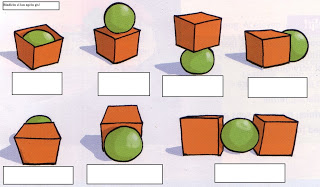Materials: None.
Organisation: Whole class.
Aim: To listen and respond to requests and to make requests.
Description: This is a whole class activity which involves children changing places in response to cues.
Preparation: No preparation is needed for this activity.
Procedure:

1. Put all the chairs in a circle facing the middle. There should be chairs for all the children but not one for the teacher.
2. Stand in the middle of the circle of chairs and nominate two children to change places (for example, ‘Marco and Anna, change places please’)
3. When the children are used to moving around, say a sentence such as ‘If you have brown eyes, change places’. The children who have brown eyes get up and try to sit in another chair. While the children are moving, the teacher tries to find a chair. Someone will be left without a chair and this child then makes the next ‘change places please’ sentence.
4. At the end of the game, say ‘there will only be one more sentence’. At this point, the child who is in the middle can say, ‘If you are a teacher, change places, please’ making sure that the teacher always loses the game!
Notes: This activity is a great deal of fun but it also has the potential to be quite chaotic. Children love it but do be careful to avoid minor accidents!
Alternatives:
• This game can be played in big groups if the children sit on the floor.
• The game can be played with low level children and simple vocabulary. For example, you can give the children names of fruits: four children are bananas; four apples; four mangos; four peaches; four melons and so on. The teacher is also a fruit. The teacher starts by saying ‘bananas and mangos’ and those children have to change places. To make it even more fun, you can introduce ‘fruit salad’ and all the children have to change places.
 My
name is Adrià Lapuente Roca, I am twenty-one years old and I was born and
raised in Valencia. My parents share origin with me but have different mother
tongues, so at home my eighteen-year-old brother and me speak Catalan with my
mum and between us, and Castilian with my dad.
My
name is Adrià Lapuente Roca, I am twenty-one years old and I was born and
raised in Valencia. My parents share origin with me but have different mother
tongues, so at home my eighteen-year-old brother and me speak Catalan with my
mum and between us, and Castilian with my dad.















































